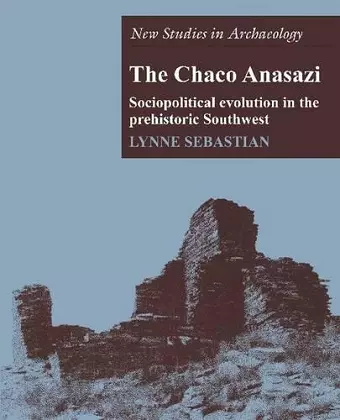The Chaco Anasazi
Sociopolitical Evolution in the Prehistoric Southwest
Format:Paperback
Publisher:Cambridge University Press
Published:28th Aug '96
Currently unavailable, and unfortunately no date known when it will be back
This paperback is available in another edition too:
- Hardback£45.00(9780521403672)

This study examines political evolution and archaeological data, producing a sociopolitical model of the rise, florescence, and decline of the Chaco Phenomenon.
Lynne Sebastian examines the transition of the Chaco system from a kinship structured society to a hierarchically organised political structure with institutional roles of leadership. She argues that the increasing political complexity was a consequence of improved rainfall in the region which permitted surplus production, not the harsh conditions as previously thought.In the tenth century AD, a remarkable cultural development took place in the harsh and forbidding San Juan Basin of northwestern New Mexico. From small-scale, simply organised, prehistoric Pueblo societies, a complex and socially differentiated political system emerged which has become known as the Chaco Phenomenon. The origins, evolution, and decline of this system have long been the subject of intense archaeological debate. Lynne Sebastian examines the transition of the Chaco system from an acephalous society, in which leadership was situational and most decision making carried out within kinship structures, to a hierarchically organised political structure with institutional roles of leadership. She argues that harsh environmental factors were not the catalyst for the transition, as has previously been thought. Rather, the increasing political complexity was a consequence of improved rainfall in the region which permitted surplus production, thus allowing those farming the best land to capitalise on the material success. By combining information on political evolution with archaeological data and the results of a computer simulation, she is able to produce a sociopolitically based model of the rise, florescence, and decline of the Chaco Phenomenon.
"By succinctly summarizing much background information and citing major sources for additional data, she has managed to concentrate on an alternative to existing explanations for the growth and nature of the Chacoan cultural system and on analyzing the political processes of small-scale sedentary societies....a major contribution to developing explanatory models." American Antiquity
"In an easy-to-read and enjoyable book, especially the last two chapters, Sebastian has created a nontypological starting point for new, wide-ranging cultural-ecological-social-political debates about the nature and process of the Chacoan phenomenon....Geographers who work with prehistoric data will find this book to be, at least, thought provoking and, at best, a paradigm-revising addendum to their worldview of the prehistoric Southwest." The Geographical Review
ISBN: 9780521574686
Dimensions: 248mm x 175mm x 10mm
Weight: 398g
196 pages